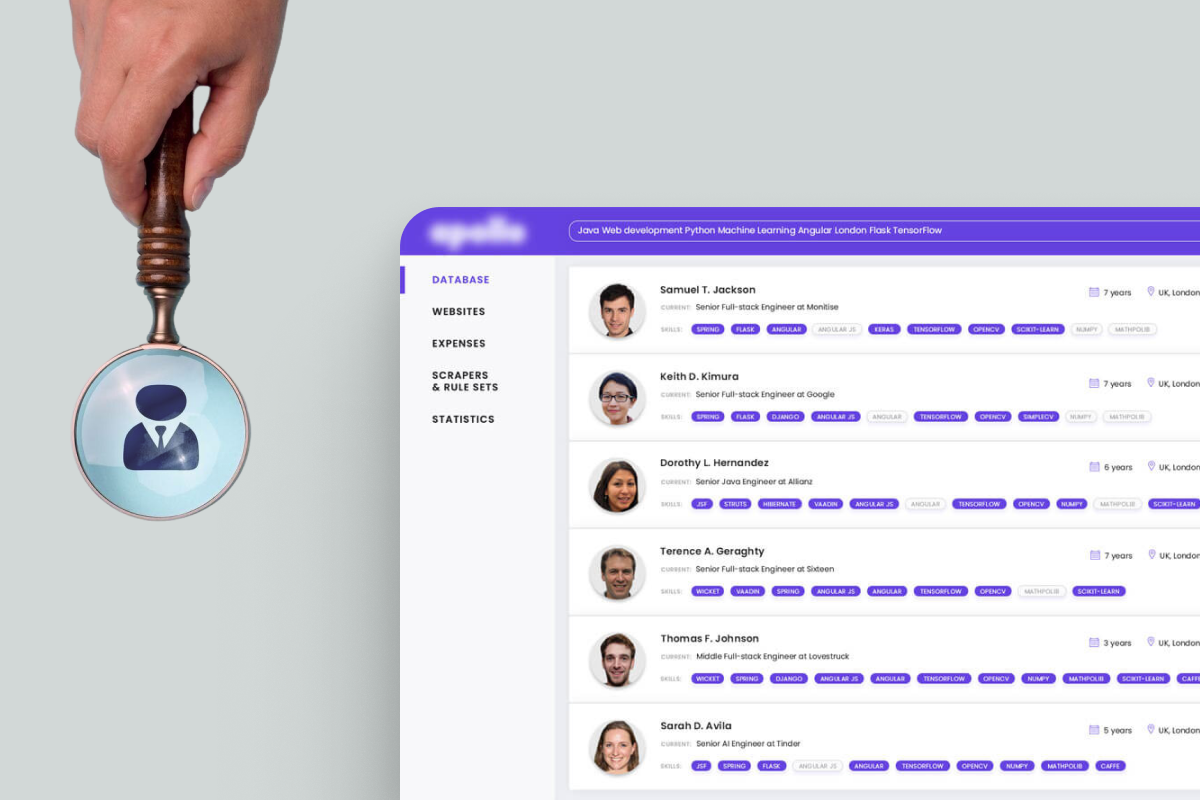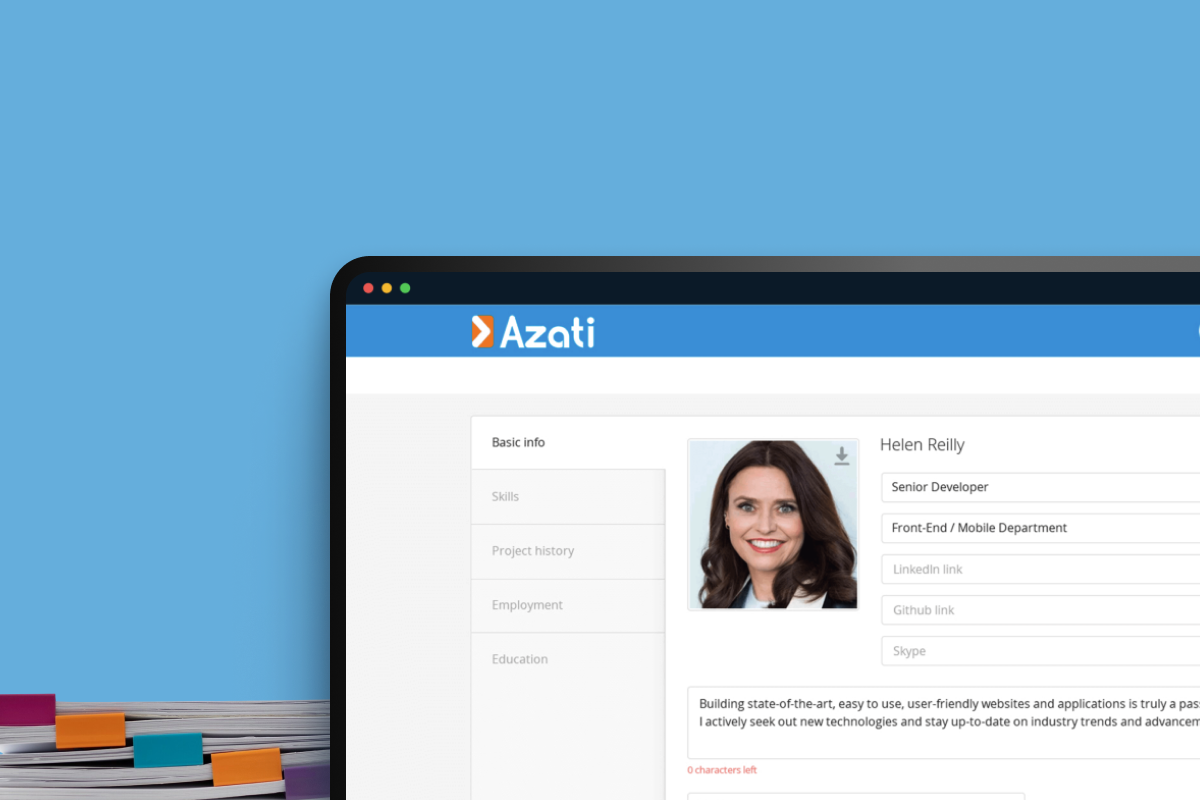All Technologies Used
Motivation
A company in the HR industry faced costly and time-consuming recruitment processes. Azati developed an automated solution that streamlined candidate selection, reducing time-to-hire by 40% and improving placement accuracy by 25%, allowing for faster team formation and increased project success.
Main Challenges
One of the significant challenges encountered was the access management process. Access to certain system components and data had to be routed through a specific department, which often resulted in delays. However, the professionalism of the Azati team allowed us to address this issue promptly, significantly reducing delays and improving the overall efficiency of the development and deployment processes.
Another challenge involved enabling a search system to find candidates based on the context and nuances of a job description, not just keywords. Similar qualifications or job experiences were often described using completely different terminology, making it difficult to align relevant qualifications accurately across diverse resumes.
Traditional search methods often fail to capture these subtle language differences, leading to less relevant matches. Moreover, maintaining high accuracy and speed across large volumes of data was critical to meet client expectations.
Our Approach
Want a similar solution?
Just tell us about your project and we'll get back to you with a free consultation.
Schedule a callSolution
LLM-Powered Information Extraction
- Automated parsing of multiple resume formats
- Identification of relevant skills, experience, and education
- Data standardization for uniform processing
Semantic Search with Vector Storage
- Context-aware candidate matching
- Vector-based similarity search
- High-speed retrieval from large datasets
Customizable Candidate Filtering
- Dynamic weighting of candidate criteria
- Project-specific candidate ranking
- Integration with recruiter preferences
Virtual Assessment Layer
- Role-specific candidate scoring
- Detailed suitability explanations
- Data-driven insights for recruiters
Business Value
40% reduction in time-to-hire: Automated resume screening and semantic matching significantly accelerated early-stage candidate evaluation.
25% improvement in candidate-role match accuracy: Context-aware search consistently delivered more relevant candidates aligned with project requirements.
1000+ resumes processed daily: The scalable microservice architecture handled high data volumes with stable performance.
Higher recruiter productivity: Automation eliminated repetitive screening tasks, allowing HR teams to focus on interviews and closing roles faster.
More consistent candidate evaluations: LLM-powered Virtual Assessment ensured unified, bias-reduced scoring across all applicants.
Improved project staffing reliability: Faster and more accurate selections helped teams fill roles earlier, reducing project delays and resource gaps.











